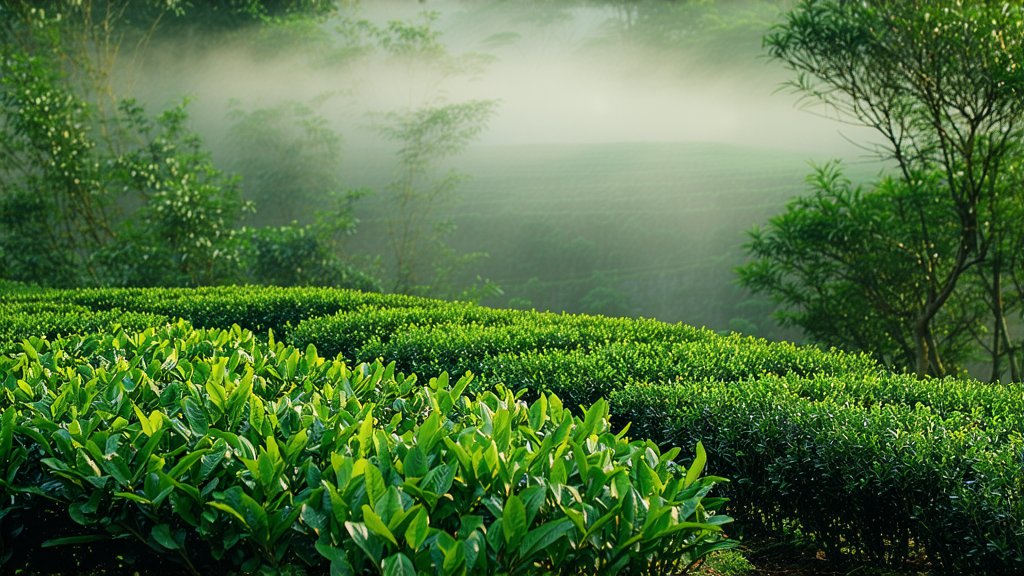
In the vast and diverse landscape of Chinese tea culture, Tieguanyin stands as a beacon of excellence among the oolong teas. This exquisite variety, hailing from the mountainous region of Anxi in Fujian Province, has captivated tea enthusiasts around the world with its unique flavor profile, intricate production process, and storied history. As a seasoned expert in the realm of Chinese tea culture and a master of tea art, allow me to guide you through the enchanting journey of Tieguanyin, unveiling its secrets, one leaf at a time.
A Historical Tapestry
Tieguanyin's roots delve deep into the annals of Chinese history, tracing back over three centuries to the early Qing Dynasty during the reign of Emperor Yongzheng (1722-1735). Legend has it that the tea was discovered by a poor scholar named Wei Yin, who stumbled upon a wild tea plant while studying for his imperial exams. The plant, with its distinct twisted shape resembling the iron wire used to bind his books, inspired him to name it "Tieguanyin," meaning "Iron Goddess of Mercy." Over time, this miraculous find gained popularity and became a symbol of purity, compassion, and the pursuit of knowledge.
Varieties and Characteristics
Tieguanyin encompasses several sub-varieties, each with its own distinctive traits. Among them, the most renowned is the Anxi Tieguanyin, which boasts a complex bouquet of floral and fruity aromas, intertwined with subtle notes of orchid and honey. Its taste profile is equally nuanced, offering a harmonious blend of sweetness, umami, and a lingering aftertaste that dances on the palate. Other notable varieties include Maoxian, Ben Shan, and Xiangfang, each reflecting the terroir of their specific growing regions within Anxi County.
The Alchemy of Craftsmanship
The creation of Tieguanyin is a testament to the artistry and precision inherent in traditional Chinese tea-making. The process begins with the careful selection of mature leaves from the Tieguanyin cultivar, typically harvested during the spring or autumn seasons when the climate conditions are optimal for flavor development.
-
Withering: Freshly picked leaves undergo a gentle withering process under controlled temperature and humidity, allowing them to lose moisture gradually and become pliable for rolling.
-
Tossing and Turning: In a large wok heated to just the right temperature, skilled tea masters toss and turn the leaves continuously, a technique known as "fixation." This step halts oxidation and helps develop the tea's characteristic greenish hue.
-
Shaping: The fixed leaves are then rolled meticulously between the palms or using specialized tools to form their iconic tight, spiral shapes. This not only contributes to the visual appeal but also enhances the even distribution of flavors during brewing.
-
Oxidation: Unlike green teas, oolongs like Tieguanyin undergo partial oxidation, where enzymes interact with oxygen, transforming the leaf's chemical composition and imparting depth to its flavor profile.
-
Roasting: Finally, the shaped leaves are roasted over charcoal or electric heat to remove excess moisture, stabilize the tea, and imbue it with a warm, toasty aroma.
-
Sorting and Packaging: After cooling, the roasted leaves are sorted according to quality and grade before being packaged for distribution.
The Art of Appreciation
To truly appreciate Tieguanyin, one must engage in the ritual of Gongfu Cha, a meticulous tea ceremony that emphasizes mindfulness and sensory exploration. Here’s how you can embark on this sensory voyage:
-
Warm the Teaware: Begin by rinsing your teapot and cups with hot water to cleanse them and maintain the optimal temperature for brewing.
-
Measure and Load: Use approximately 5 grams of Tieguanyin per 100ml of water. Place the leaves into a Yixing clay pot or a Gaiwan, a traditional Chinese tea cup with a lid and saucer.
-
Steeping: Pour boiling water (around 95°C) over the leaves, covering them completely. Allow the first infusion to steep for about 15 seconds to "wake up" the leaves, discarding this initial brew. Subsequent infusions can range from 20 to 40 seconds, adjusted according to personal preference and the strength desired.
-
Aroma and Taste: Before taking your first sip, inhale deeply to capture the tea's aromatic essence. Sip slowly, allowing the liquid to coat your tongue and savor the interplay of flavors—sweet, creamy, floral, and mineral—that define Tieguanyin.
-
Multiple Infusions: Tieguanyin is known for its resilience; it can be steeped multiple times (up to 8-10 infusions), with each brew revealing new dimensions of its character.
In conclusion, Tieguanyin is more than just a beverage; it embodies the philosophy of harmony between man and nature, the pursuit of perfection in craftsmanship, and the celebration of life's simple pleasures. As you raise your cup to this iron goddess of mercy, may you find solace in her embrace and inspiration in her story, a reminder that even amidst the chaos of the world, there exists a sanctuary in every steaming cup of oolong tea.